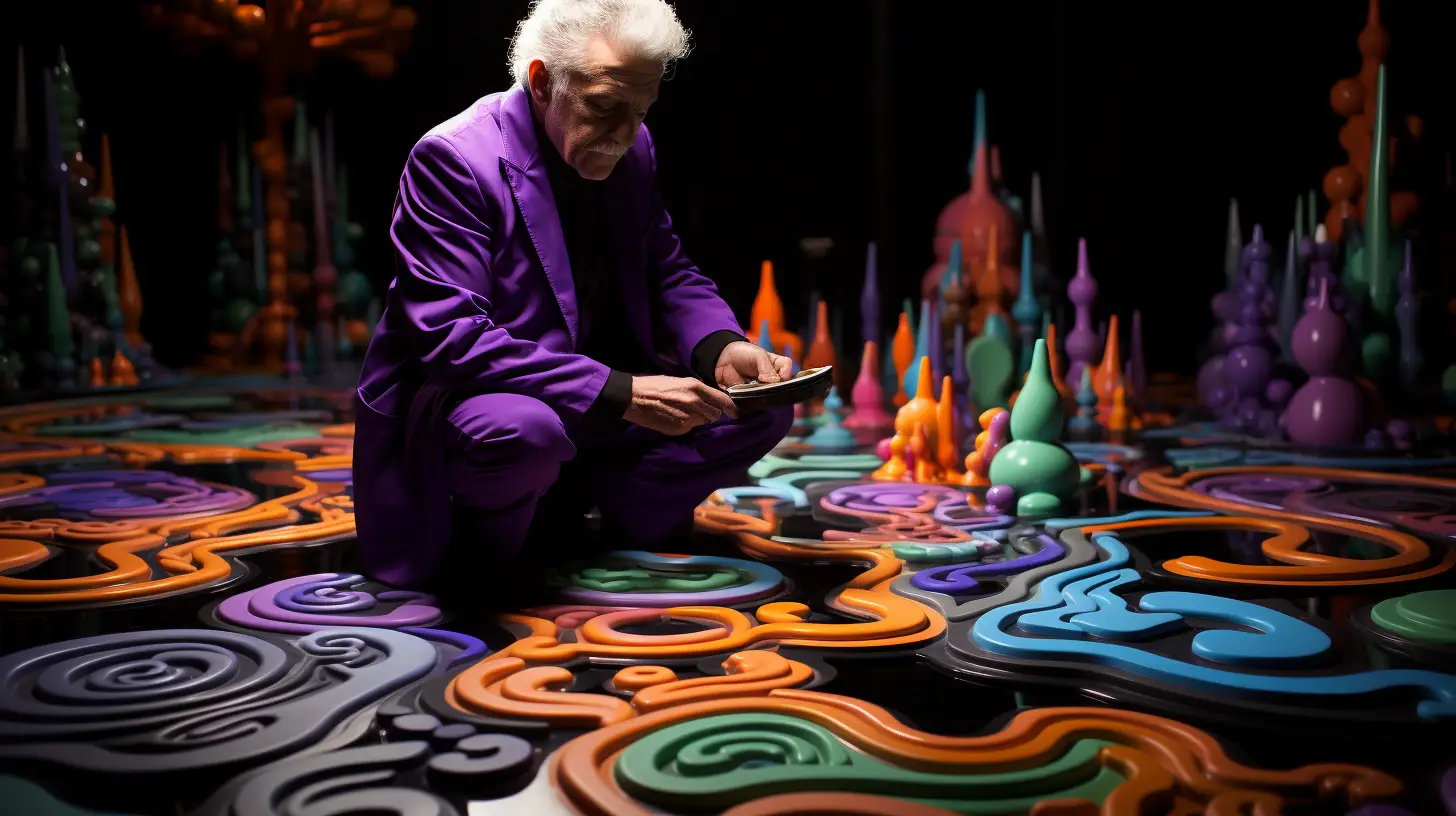
Visual IQ: The Hidden Power in Your Perception
How Perception Shapes Our Lives
What if I told you that your ability to visualize shapes, comprehend spatial relationships, and interpret visual cues could define so many aspects of your life? Let's jump into the area of Visual IQ an exploration of its essence, results, and untapped potential that could transform how we learn, work, and interact every day.
Understanding Visual IQ means uncovering layers of cognitive abilities that connect the dots between how we see the world and how we think. It's not the same as traditional IQ, which merely evaluates logical reasoning or verbal skills. Visual IQ encompasses how we process visual information and use it to solve complex problems and make decisions. Did you know that a remarkable portion of cognitive performance is rooted in visual processing? Statistically speaking, many cognitive assessments reveal that improving one's visual IQ can upgrade academic and professional success.
The Science Behind Visual IQ
What is Visual IQ?
Visual intelligence refers to the brain's capability to interpret visual data. Unlike traditional Intelligence Quotient (IQ), which measures abstract reasoning and language skills, Visual IQ looks at how effectively we can analyze, understand, and manipulate visual information. It's similar to a superpower rather than just another test score. Whether you're analyzing a layout for a design project or navigating your daily commute, visual reasoning comes into play in ways you may not realize.
The Neurological Basis of Visual IQ
The fine architecture of your brain is key in processing visual stimuli. Regions like the visual cortex play remarkable roles in how we perceive and interpret everything around us. Engaging with visual stimuli doesn't just fill your senses, it activates neural pathways that boost cognitive performance. By stimulating different parts of your brain, visual experiences can refine overall cognitive agility, making this much more than a passive exercise.
Measuring Visual IQ
While we can talk endlessly about visual IQ, how do we actually measure it? Various assessment tools exist, from interactive tests to more traditional measurement methods. That said, many tests fail to capture the full extent of one's visual intelligence. Traditional visual IQ tests may pigeonhole individuals based on standardized responses, overlooking the unique ways people interpret visual data in their surroundings.
The Role of Visual IQ in Daily Life
Influence on Learning and Education
Ever wonder why some people catch on to new concepts faster than others in a visually inclined setting? In an educational context, visual IQ can significantly influence learning outcomes. Different environments with varying visual stimuli affect how we absorb information. Techniques that incorporate visual learning harness your brain's natural inclination for images and patterns. For example, teachers using visual aids, charts, and illustrations often find their students performing significantly better compared to traditional lectures alone.
Visual IQ in Professional Settings
Certain career paths require an elevated visual IQ, such as design, engineering, and medicine. Consider architects who meticulously analyze both structural integrity and aesthetic appeal. Their success hinges not merely on accuracy but on a refined understanding of space and visual result. High visual IQ professionals make confident and revolutionary decisions, reinforcing the notion that visual intelligence is critical for career advancement in a myriad of fields.
Visual IQ and Daily Decision Making
Everyday decision making isn't exempt from the influence of visual IQ. A well functioning visual processing system allows for quicker problem solving and critical thinking. Whether you're preparing a meal or coordinating a family trip, your ability to mentally visualize outcomes plays a essential role. Picture this: when tackling a puzzle, the key to success lies in spatial awareness and the capacity to forecast the result you desire.
Enhancing Visual IQ
Cognitive Training and Exercises
Want to level up your visual IQ? There are engaging activities that can help. Games and puzzles often provide excellent training grounds for boosting visual skills. Strategies like participating in immersive experiences or dedicated cognitive exercises can spur major improvement. For example, jigsaw puzzles improve visual spatial reasoning while honing your problem solving skills.
The Influence of Technology
Let's face it technology is not just part of our lives, it's revolutionizing how we perceive and process visual information. Virtual Reality (VR) and Improved Reality (AR) environments provide unique platforms for visual skills training. Think about immersive experiences that allow you to engage with spatial concepts intuitively. The integration of AI tools can help refine visual IQ assessments, providing immediate feedback and personalized training pathways.
The Power of Art and Creativity
Engaging with art can effectively boost your visual intelligence. Analyzing colors, shapes, and textures can improve perception capabilities and spark creativity. Immersing oneself in artistic activities allows for a intense exploration of visual elements that stimulates brain pathways. Ease your way into the world of creativity, it's not about mastering a build but about engaging with the visual experience itself.
Current Research and Future Trends
Ongoing Studies in Visual Intelligence
Research on visual intelligence is ever growing and thoroughly fascinating. Recent studies link visual IQ with emotional intelligence suggesting that our ability to interpret visuals influences our emotional responses to them. Understanding these correlational dynamics may open new doors for training and assessment models that integrate various intelligence facets.
Future Applications of Visual IQ Assessment
Visual IQ is not merely a personal development tool, its ramifications extend to businesses. Many organizations are beginning to value visual intelligence in recruitment strategies. Assessing potential hires with visual IQ yards can infuse creativity and progress into teams, giving companies that extra edge. Kickstart the dialogue on visual effects in marketing and boost the customer experience like never before through intentional visual storytelling.
Conclusion
Visual IQ is the unseen force that drives our understanding and interpretation of the world. As we peel back layers of this complex cognitive ability, we realize its immense potential across different domains from education to the workplace and everything in between. Each of us has the opportunity to engage more effectively with our visual processing skills. So, how will you start on this journey of exploration and enhancement? As new technologies emerge and our understanding of the brain expands, what revolutionary ways will we discover to raise our visual intelligence? The future holds exciting possibilities, and it's time to tune in to what's next.

